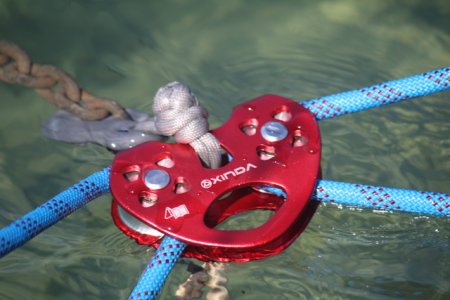Neeves
Well-known member
There is no need for a specialised triple thimble when a simple large £5 super strong low friction ring, already anodised, can work better. Two lines plus an attachment to the chain can work perfectly on a single large thimble as has been shown in post #16.
The much less expensive £5 large LFR in my view is superior. It will have lower friction and therefore lower wear than the smaller holes and tighter radius in the more expensive and harder to obtain three hole device. Win win.
The pictured triple small low friction ring in Jonathan’s post is around £120.
The problem needs a little bit of thinking outside the box.
View attachment 181376
The price is prohibitive (and very difficult to justify), which is why I have not tried one - but its an option. Someone, somewhere might make a cheaper version, in the same way LFRs and soft shackles cost peanuts from China including the large 4x4 versions. Similarly rock climbing belay plates and figure of 8 abseiling devices (ex Timu or Aliexpress).
Unless you actually have one you don't realise how big they are... the 4x4 recovery rings are huge!
I had 2 my 7075 aluminium alloy Bridle Plates made in China by the same company who make Ronstan's LFRs (and bought 2 sets of LFRs for almost nothing). They also made me 2 bridle plates in 2205 Duplex stainless.
Its debatable and having used LFRs in a bridle, set up as mine, the possibility of lower friction might not be advantageous.
Jonathan




